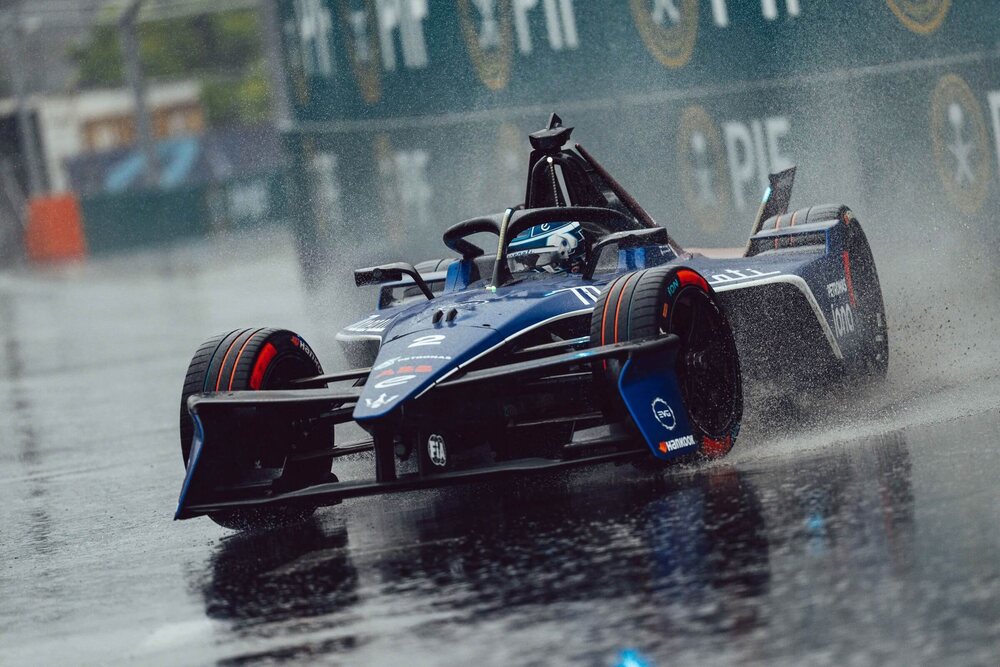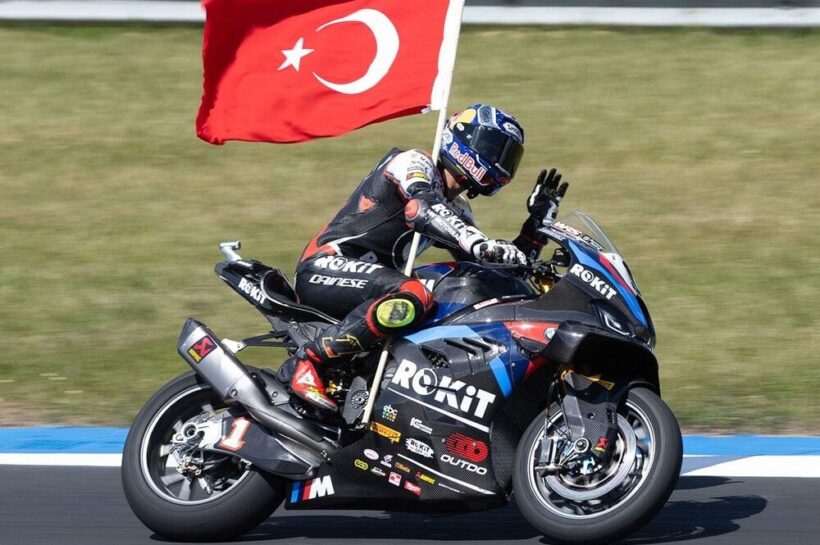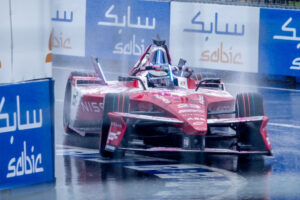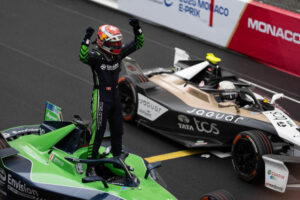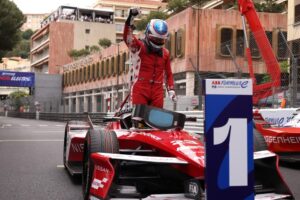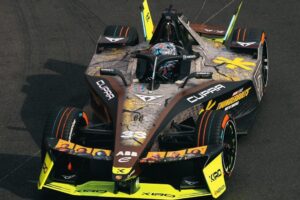The 2025 Tokyo E-Prix Race 1 delivered one of the most dramatic and strategically complex rounds of the Formula E season as Maserati’s Stoffel Vandoorne claimed a sensational victory to end his three-year winless streak.
The race held under challenging wet conditions showcased the unpredictable nature of electric street racing and the tactical brilliance required to succeed at the highest level.
Vandoorne’s triumph was not only a testament to his driving skill but also to the Maserati team’s bold approach in a race that saw energy management, pit strategy, and weather all play pivotal roles.
From the outset, Tokyo E-Prix Race 1 was marked by uncertainty. The qualifying session was cancelled due to adverse weather forcing the grid to be set based on championship standings and previous practice times.
This shake-up meant that several drivers started out of their usual positions with some of the usual front-runners needing to fight their way through the field. The wet track added another layer of complexity with grip levels changing lap by lap and drivers needing to balance aggression with caution to avoid costly mistakes.
As the lights went out, Nissan’s Oliver Rowland seized the early initiative. The championship leader’s mastery of the slippery conditions allowed him to build a steady lead capitalizing on his car’s efficiency and his own smooth driving style.
Behind him, the field jostled for position with McLaren’s Taylor Barnard and Envision’s Sebastien Buemi among those making early gains.
The first laps were fraught with incidents as drivers struggled for traction at the newly reconfigured high-speed Turn 16 which had already claimed victims in practice.
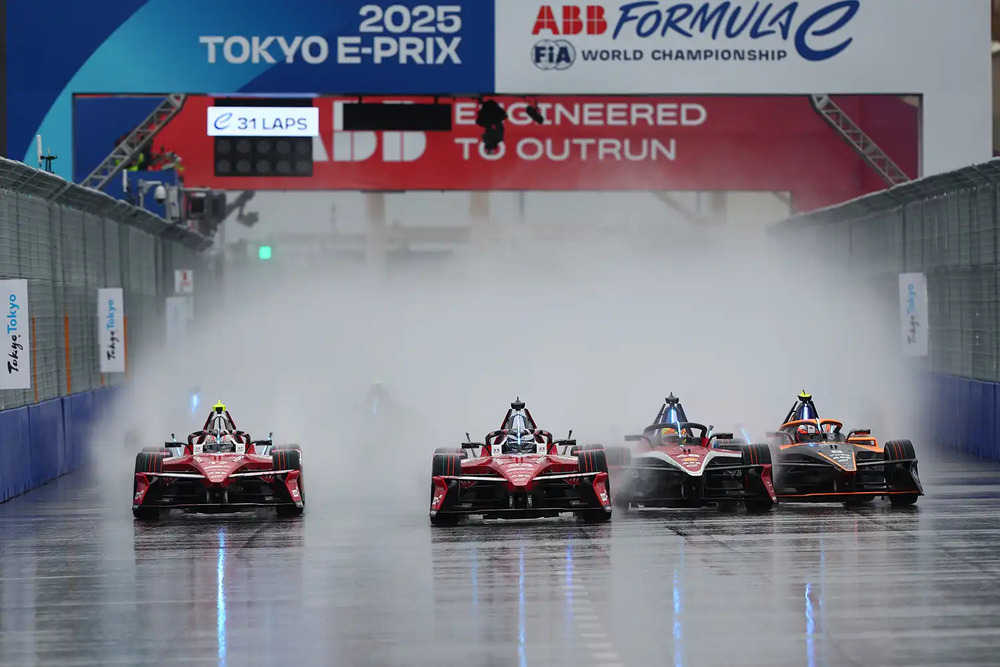
Maserati’s Stoffel Vandoorne, meanwhile, kept a watching brief in the opening phase. The former Formula E world champion, has endured a difficult run of form in recent seasons but in Tokyo he demonstrated the patience and tactical awareness that once made him the benchmark in the series.
The Belgian and his team opted for a conservative start focusing on energy conservation and waiting for the right moment to strike.
The race’s turning point came at the halfway mark as the first cycles of the innovative “Pit Boost” strategy began to unfold.
The Pit Boost which grants drivers an extra 50kWh of power after a mandatory pit stop has become a key tactical element in Formula E, allowing teams to trade track position for a late-race surge.
Vandoorne timed his Pit Boost to perfection diving into the pit lane just before a red flag was thrown for a multi-car incident further down the field.
The timing of the red flag proved crucial: when the race resumed, Vandoorne found himself at the head of the field having leapfrogged his rivals who had yet to take their own Pit Boosts.
From that point on Vandoorne was untouchable. With clear air ahead and the benefit of extra power he pulled away from the chasing pack expertly managing his energy reserves and navigating the treacherous conditions with aplomb.
The Belgian’s margin of victory was described as “staggering” by observers, a fitting reward for a driver who has endured more than his share of misfortune in recent years.
Behind Vandoorne, the battle for the podium was intense. Rowland despite losing the lead drove a measured race to secure second place – a result that extended his already commanding lead in the drivers’ championship.
MORE FORMULA E:
Rowland lands Tokyo E-Prix pole as Formula E cancels qualifying due to heavy rain
Oliver Rowland tops wet Tokyo E-Prix FP2 for Nissan
Who will be on Season 11 grid? The full 2024-25 Formula E driver line-up
McLaren’s Taylor Barnard completed the podium, delivering a mature performance that belied his relative inexperience in the series. Barnard’s pace in the wet was impressive, and his ability to stay out of trouble while others faltered was key to his third-place finish.
Sebastien Buemi – a veteran of both Formula E and endurance racing – brought his Envision car home in fourth, while Dan Ticktum rounded out the top five for Cupra Kiro after a combative drive.
Further down the order, several drivers produced standout performances. Edoardo Mortara finished sixth for Mahindra ahead of Porsche’s Antonio Felix da Costa who recovered from a difficult qualifying to claim valuable points in seventh.
Nyck de Vries also driving for Mahindra took eighth while Jean-Eric Vergne (DS Penske) and Robin Frijns (Envision) completed the top ten.
Not every driver enjoyed a trouble-free Tokyo E-Prix Race 1. Jaguar’s Mitch Evans and DS Penske’s Maximilian Günther both failed to finish after being caught up in incidents while Andretti’s Jake Dennis was disqualified post-race for a technical infringement.

